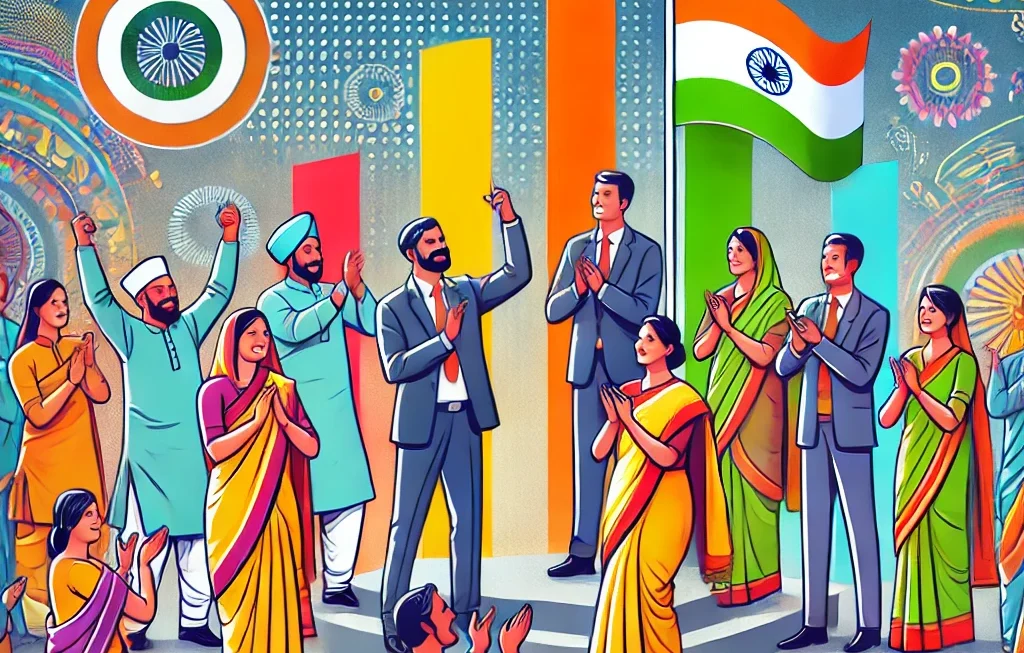Women in the UK
Throughout history, women have been fundamental and transformational in creating the fabric of UK society. Women have made a lasting contribution to the development of the country, from political pioneers to literary giants. In this blog post, we go on an adventure to investigate the role that women play in UK culture and delve into the dramatic transition from childhood to womanhood. We will also make an effort to comprehend the proper terminology for treating women with honor and respect.

1. Women’s Importance in the UK
Women have been the driving force behind the UK’s prosperity and development. Women have consistently defied social expectations and battled for their rights and the rights of others, from great queens like Elizabeth I to current trailblazers like Emmeline Pankhurst. Their contributions to literature, science, art, and politics have enhanced the cultural fabric of the country.
2. Making the Transition from Girl to Woman: A Guide
A remarkable shift that involves physical, emotional, and psychological changes is the transition from being a girl to being a woman. While age does play a role in the shift from girl to woman, other factors such as culture, traditions, and personal experiences also have an impact. Turning 18 is one of the societal milestones that frequently marks this shift, but it is important to understand that becoming a woman is more than simply a number; it is the conclusion of one’s own personal development and self-discovery.
3. The Influence of Language: Treating Women With Respect
The influence of language on attitudes and perceptions is enormous. A culture of equality and respect must be fostered by treating women with respect. Language that reinforces harmful preconceptions or uses derogatory terminology reduces the value of women’s efforts. We should, instead, use language that celebrates the individuality and strengths of women.
4. A Guide to Gender Terminology
Understanding gender-specific words is essential for navigating conversations successfully. Males are referred to as boys when they are young and as men when they are adults. Similar to this, a female is referred to as a girl when she is younger and a woman when she is an adult. Understanding and effectively using these concepts are signs of respect and understanding.
5. Using Appropriate Titles and the Power of Respectful Address
Using appropriate titles is a technique to show respect in various social settings. In formal contexts, it is customary to address women using titles such as “Ms.,” “Mrs.,” or “Miss,” followed by the person’s last name. In casual circumstances, it is appropriate to address them by their first names while keeping a courteous tone. These modest actions go a long way toward expressing gratitude for their participation and contributions.

6. The Meaning of Womanhood
Beyond the stage when a girl becomes a woman, femininity is a complex idea. It includes a woman’s accomplishments, experiences, and sense of self in addition to her age. Women should be honored for their many strengths, which include fortitude, empathy, leadership, and creativity. Women are empowered to proudly embrace their individual journeys when they embrace the essence of womanhood.
7. The Development of the Word “Girl”
Language is dynamic and changes along with society. “Girl” is not an exception. In the past, it was a phrase that could be applied to young people of either sex. It eventually became gender-specific, referring only to young women. An understanding of the historical context of language facilitates effective and inclusive communication.
8. Observing the Plural Form of “Female”
The proper way to pluralize “female” is “females.” To recognize the uniqueness of women in varied circumstances, it is crucial to utilize truthful and inclusive terminology.
9. Pronoun Use Is A Symbol Of Respect
A person’s gender identity is respected when the proper pronouns are used. While “him” is used to refer to a boy or a man, “her” is used to refer to a girl or a woman. A person’s identity is recognized and validated when the proper pronouns are used.
10. Showing Support and Appreciation for Women
Fostering an inclusive society requires recognizing and respecting the achievements of women. Women are inspired and motivated to keep breaking down barriers when they are shown gratitude and recognition for their achievements, talents, and traits.

11. Educating Young Girls to Be Leaders of Tomorrow
Young girls’ empowerment is essential for building a more just future. We help girls fulfill their potential and emerge as leaders in numerous sectors by ensuring that they have equal access to education, mentorship, and opportunity.
12. Supporting Women’s Advancement in the Workplace: Breaking Barriers
Workplace obstacles for women include discrimination based on gender and unequal pay. To achieve gender equality, it is crucial to remove these obstacles and promote equal opportunity and representation in leadership roles.
13. Honoring UK Women of Influence: Changemakers
Numerous powerful women who have significantly impacted society have called the UK home. These trailblazers, from the early supporter of women’s rights, Mary Wollstonecraft, to contemporary icons like J.K. Rowling, have had a profound effect on the globe.
14. Career and Family Balancing: A Juggling Act
For many women, finding the right balance between family obligations and professional goals is a constant struggle. We can assist women in succeeding both at home and at work by encouraging flexible work policies and dividing up household duties.
15. How the UK observes International Women’s Day
International Women’s Day is an occasion to recognize the accomplishments of women around the world and promote gender equality. This day offers the UK the chance to hold activities, lectures, and workshops that celebrate women’s achievements and talk about the ongoing struggle for gender equality around the world.
Conclusion
In conclusion, honoring women in the UK goes beyond merely acknowledging their gender or age but also their priceless contributions to society. We can create a more fair and inclusive culture where women may thrive and have a positive impact on the world by understanding the proper terminology to treat females respectfully, praising their accomplishments, and supporting their empowerment. Let’s proudly commemorate the transition from girl to woman and embrace the essence of womanhood in all of its varied manifestations.
FAQs
Q: At what age can a girl be called a woman?
A: When can a girl be referred to as a woman? When a girl turns 18 and becomes a legal adult in the UK, she is often referred to as a lady. Physical, emotional, and psychological changes characterize this passage from girlhood to womanhood. The age might, however, fluctuate according to cultural and personal factors. When choosing the proper word, it is crucial to take into account both the quantity and the person’s own development and experiences.
Q: Is it OK to call a woman a woman?
A: Yes, calling an adult female a woman is very appropriate and respectful. Utilizing the pronoun “woman” is a sign of respect for her maturity and life experience. When addressing someone, it is crucial to use the proper terminology and to understand that doing so shows comprehension and civility.
Q: Is a male a boy or a girl?
A: A male is referred to as a boy when he is young, and an adult male is referred to as a man. Physical, emotional, and sociological changes that accompany becoming a man, as well as the demands of adult society, often characterize the passage from boyhood to manhood. It’s important to know the difference between “boy” and “man” in order to communicate effectively and be addressed with respect.
Q: How do you call a woman with respect?
A: It’s crucial to use respectable terms and titles while addressing women. In formal contexts, it’s typical to address someone as “Ms.,” “Mrs.,” or “Miss,” followed by their last name. In casual situations, using their first name while still being respectful is permissible. A key element of promoting a culture of equality and dignity is treating women with respect and speaking to them with decency.
Q: How should I address a woman?
A: It’s best to be kind and considerate when speaking to women. In formal settings, it is considered polite to address people with the proper title, such as “Ms.,” “Mrs.,” or “Miss,” followed by their last name. In casual circumstances, using their first name while still being respectful is OK. The idea is to use language that expresses respect and acknowledgement of the person’s presence and contributions while taking into account the environment and their preferences.
Q: What makes a girl girl?
A: Typically, a young female who has not yet achieved adulthood is referred to as a “girl.” It is a stage of life characterized by growth, education, and advancement. Girls go through puberty during adolescence, which causes bodily changes that signal the beginning of femininity. It’s crucial to remember that, depending on historical and cultural settings, the term “girl” can also be used more generally to designate young people of opposite gender.
Q: What is the plural form of female?
A: “Females” is the plural version of the word “female.” “Females” is the proper pronoun to use when referring to multiple female individuals. In order to recognize variety and the presence of multiple women in varied circumstances, it is crucial to use the proper plural form of the word “female” in communication.
Q: Do we use her for boys or girls?
A: While “him” is used for a boy or a male, “her” is used for a girl or a female. Language’s primary tool for denoting gender identification is pronouns. Using the appropriate pronouns promotes successful and inclusive communication and shows respect for a person’s gender.
Q: How do you say man or woman?
A: “Man” refers to a mature male, usually one who is at least 18 years old. The term woman,” nevertheless, refers to a mature female. These words denote adulthood and are used to distinguish people depending on their gender and age.
Q: What did the word girl originally mean?
A: The term girl is used to refer to a young person of either sex. It was a phrase that may be used to refer to children or adolescents of either gender. The term started to be associated more and more with young females. Accurately identifying the context and usage of phrases depends on our ability to comprehend the historical evolution of language.
Q: What is the best word to say to a woman?
A: The best compliments are ones that truly acknowledge, respect, and support a woman’s achievements and positive traits. It is effective and inspiring to get compliments that specifically mention her talents, accomplishments, and admirable qualities. A supportive and empowering environment for women can be created by using language that demonstrates genuine admiration and encouragement.
Q: How do you tell a girl they are the best?
A: Offer specific, sincere comments that recognize a girl’s special talents, accomplishments, and attributes in order to let her know she is the greatest. A significant way to offer support and encouragement is by praising her successes and genuinely admiring her efforts. In order to make her feel valued and appreciated for her uniqueness and talents, it is crucial to be real and considerate in your praises.




